Card Overview
The card overview section lists the cards described in this chapter and provides compatibility information.
The purpose of a TXP, MXP, GE_XP, 10GE_XP, GE_XPE, 10GE_XPE, ADM-10G, OTU2_XP, AR_MXP, AR_XP, or AR_XPE card is to convert the “gray” optical client interface signals into trunk signals that operate in the “colored” dense wavelength division multiplexing (DWDM) wavelength range. Client-facing gray optical signals generally operate at shorter wavelengths, whereas DWDM colored optical signals are in the longer wavelength range (for example, 1490 nm = violet; 1510 nm = blue; 1530 nm = green; 1550 nm = yellow; 1570 nm = orange; 1590 nm = red; 1610 nm = brown). Some of the newer client-facing PPMs, however, operate in the colored region. Transponding or muxponding is the process of converting the signals between the client and trunk wavelengths.
An MXP generally handles several client signals. It aggregates, or multiplexes, lower rate client signals together and sends them out over a higher rate trunk port. Likewise, it demultiplexes optical signals coming in on a trunk and sends them out to individual client ports. A TXP converts a single client signal to a single trunk signal and converts a single incoming trunk signal to a single client signal. GE_XP, 10GE_XP, GE_XPE, and 10GE_XPE cards can be provisioned as TXPs, as MXPs, or as Layer 2 switches.
All of the TXP and MXP cards perform optical to electrical to optical (OEO) conversion. As a result, they are not optically transparent cards. The reason for this is that the cards must operate on the signals passing through them, so it is necessary to do an OEO conversion.
On the other hand, the termination mode for all of the TXPs and MXPs, which is done at the electrical level, can be configured to be transparent. In this case, neither the Line nor the Section overhead is terminated. The cards can also be configured so that either Line or Section overhead can be terminated, or both can be terminated.
 Note |
The MXP_2.5G_10G card, by design, when configured in the transparent termination mode, actually does terminate some of the bytes. See "Termination Modes" section for details. |
Card Compatibility
|
Card Name |
R4.5 - R4.6 |
R4.7 - R6.0 |
R7.0 and R7.2 |
R8.0 - R8.5 |
R9.0 and R9.1 |
|---|---|---|---|---|---|
|
TXP_MR_10G |
15454-DWDM | 15454-DWDM | 15454-DWDM | 15454-DWDM | 15454-DWDM |
|
TXP_MR_10E |
No |
15454-DWDM |
15454-DWDM |
15454-DWDM | 15454-DWDM |
|
TXP_MR_10E_C |
No |
No |
15454-DWDM |
15454-DWDM |
15454-DWDM |
|
TXP_MR_10E_L |
No |
No |
15454-DWDM |
15454-DWDM |
15454-DWDM |
|
TXP_MR_ 2.5G and TXPP_ MR_2.5G |
15454-DWDM |
15454-DWDM |
15454-DWDM |
15454-DWDM |
15454-DWDM |
|
MXP_2.5G_10G |
15454-DWDM |
15454-DWDM |
15454-DWDM |
15454-DWDM |
15454-DWDM |
|
MXP_2.5G _10E |
No |
15454-DWDM |
15454-DWDM |
15454-DWDM |
15454-DWDM |
|
MXP_2.5G_ 10E_C |
No |
No |
15454-DWDM |
15454-DWDM |
15454-DWDM |
|
MXP_2.5G_ 10E_L |
No |
No |
15454-DWDM |
15454-DWDM |
15454-DWDM |
|
MXP_MR_2.5G and MXPP_MR_ 2.5G |
No |
15454-DWDM |
15454-DWDM |
15454-DWDM |
15454-DWDM |
|
MXP_MR_ 10DME_C |
No |
No |
15454-DWDM |
15454-DWDM |
15454-DWDM |
|
MXP_MR_ 10DME_L |
No |
No |
15454-DWDM |
15454-DWDM |
15454-DWDM |
|
GE_XP and 10GE_XP |
No |
No |
No |
15454-DWDM |
15454-DWDM |
|
GE_XPE and 10GE_XPE |
No |
No |
No |
No |
15454-DWDM |
|
ADM-10G |
No |
No |
No |
15454-DWDM |
15454-DWDM |
|
OTU2_XP |
No |
No |
No |
No |
15454-DWDM |
|
TXP_MR_10EX_C, MXP_2.5G _ 10EX_C, and MXP_MR _ 10DMEX_C |
No |
No |
No |
No |
No and 15454- DWDM for R9.1 |
|
40E-TXP-C, 40ME- TXP-C, 40E-MXP-C, and 40ME-MXP-C |
No |
No |
No |
No |
No |
|
40E-MXP-C |
No |
No |
No |
No |
No |
|
40G-MXP-C |
No |
No |
No |
No |
No |
|
AR_XP |
No |
No |
No |
No |
No |
|
AR_MXP and AR_XPE |
No |
No |
No |
No |
No |
|
100G-LC-C, 100G-ME-C, 10x10G-LC, and 100GS-CK-LC |
No |
No |
No |
No |
No |
|
CFP-LC |
No |
No |
No |
No |
No |
|
WSE |
No |
No |
No |
No |
No |
|
100G-CK-LC, 100ME-CK-LC, and 400G-XP-LC |
No |
No |
No |
No |
No |
| Card Name |
R9.2 |
R9.2.1 |
R9.3 |
R9.4 |
R9.6.x |
R9.8 |
|
TXP_MR_10G |
15454 - DWDM |
15454 - DWDM |
15454 - DWDM |
15454 - DWDM |
15454 - DWDM |
15454 - DWDM |
|
TXP_MR_10E |
15454 - DWDM |
15454 - DWDM |
15454 - DWDM |
15454 - DWDM |
15454 - DWDM |
15454 - DWDM |
|
TXP_MR_10E_C |
15454 - M2, 15454 - M6, 15454 - DWDM |
15454 - M2, 15454 - M6, 15454 - DWDM |
15454 - M2, 15454 - M6, 15454 - DWDM |
15454 - M2, 15454 - M6, 15454 - DWDM |
15454 - M2, 15454 - M6, 15454 - DWDM |
15454 - M2, 15454 - M6, 15454 - DWDM |
|
TXP_MR_10E_L |
15454 - DWDM |
15454 - DWDM |
15454 - DWDM |
15454 - DWDM |
15454 - DWDM |
15454 - DWDM |
|
TXP_MR_2.5G and TXPP_MR_2.5G |
15454 - M2, 15454 - M6, 15454 - DWDM |
15454 - M2, 15454 - M6, 15454 - DWDM |
15454 - M2, 15454 - M6, 15454 - DWDM |
15454 - M2, 15454 - M6, 15454 - DWDM |
15454 - M2, 15454 - M6, 15454 - DWDM |
15454 - M2, 15454 - M6, 15454 - DWDM |
|
MXP_2.5G_10G |
15454 - DWDM |
15454 - DWDM |
15454 - DWDM |
15454 - DWDM |
15454 - DWDM |
15454 - DWDM |
|
MXP_2.5G_10E |
15454 - DWDM |
15454 - DWDM |
15454 - DWDM |
15454 - DWDM |
15454 - DWDM |
15454 - DWDM |
|
MXP_2.5G_10E_C |
15454 - M2, 15454 - M6, 15454 - DWDM |
15454 - M2, 15454 - M6, 15454 - DWDM |
15454 - M2, 15454 - M6, 15454 - DWDM |
15454 - M2, 15454 - M6, 15454 - DWDM |
15454 - M2, 15454 - M6, 15454 - DWDM |
15454 - M2, 15454 - M6, 15454 - DWDM |
|
MXP_2.5G_10E_L |
15454 - DWDM |
15454 - DWDM |
15454 - DWDM |
15454 - DWDM |
15454 - DWDM |
15454 - DWDM |
|
MXP_MR_2.5G and MXPP_MR_2.5G |
15454 - M2, 15454 - M6, 15454 - DWDM |
15454 - M2, 15454 - M6, 15454 - DWDM |
15454 - M2, 15454 - M6, 15454 - DWDM |
15454 - M2, 15454 - M6, 15454 - DWDM |
15454 - M2, 15454 - M6, 15454 - DWDM |
15454 - M2, 15454 - M6, 15454 - DWDM |
|
MXP_MR_10DME_C |
15454 - M2, 15454 - M6, 15454 - DWDM |
15454 - M2, 15454 - M6, 15454 - DWDM |
15454 - M2, 15454 - M6, 15454 - DWDM |
15454 - M2, 15454 - M6, 15454 - DWDM |
15454 - M2, 15454 - M6, 15454 - DWDM |
15454 - M2, 15454 - M6, 15454 - DWDM |
|
MXP_MR_10DME_L |
15454 - DWDM |
15454 - DWDM |
15454 - DWDM |
15454 - DWDM |
15454 - DWDM |
15454 - DWDM |
|
GE_XP and 10GE_XP |
15454 - M2, 15454 - M6, 15454 - DWDM |
15454 - M2, 15454 - M6, 15454 - DWDM |
15454 - M2, 15454 - M6, 15454 - DWDM |
15454 - M2, 15454 - M6, 15454 - DWDM |
15454 - M2, 15454 - M6, 15454 - DWDM |
15454 - M2, 15454 - M6, 15454 - DWDM |
|
GE_XPE and 10GE_XPE |
15454 - M2, 15454 - M6, 15454 - DWDM |
15454 - M2, 15454 - M6, 15454 - DWDM |
15454 - M2, 15454 - M6, 15454 - DWDM |
15454 - M2, 15454 - M6, 15454 - DWDM |
15454 - M2, 15454 - M6, 15454 - DWDM |
15454 - M2, 15454 - M6, 15454 - DWDM |
|
ADM - 10G |
15454 - M2, 15454 - M6, 15454 - DWDM |
15454 - M2, 15454 - M6, 15454 - DWDM |
15454 - M2, 15454 - M6, 15454 - DWDM |
15454 - M2, 15454 - M6, 15454 - DWDM |
15454 - M2, 15454 - M6, 15454 - DWDM |
15454 - M2, 15454 - M6, 15454 - DWDM |
|
OTU2_XP |
15454 - M2, 15454 - M6, 15454 - DWDM |
15454 - M2, 15454 - M6, 15454 - DWDM |
15454 - M2, 15454 - M6, 15454 - DWDM |
15454 - M2, 15454 - M6, 15454 - DWDM |
15454 - M2, 15454 - M6, 15454 - DWDM |
15454 - M2, 15454 - M6, 15454 - DWDM |
|
TXP_MR_10EX_C, MXP_2.5G_10EX_C, and MXP_MR_10DMEX_C |
15454 - M2, 15454 - M6, 15454 - DWDM |
15454 - M2, 15454 - M6, 15454 - DWDM |
15454 - M2, 15454 - M6, 15454 - DWDM |
15454 - M2, 15454 - M6, 15454 - DWDM |
15454 - M2, 15454 - M6, 15454 - DWDM |
15454 - M2, 15454 - M6, 15454 - DWDM |
|
40E - TXP - C, 40ME - TXP - C, 40E - MXP - C, and 40ME - MXP - C |
No |
15454 - M2, 15454 - M6, 15454 - DWDM |
15454 - M2, 15454 - M6, 15454 - DWDM |
15454 - M2, 15454 - M6, 15454 - DWDM |
15454 - M2, 15454 - M6, 15454 - DWDM |
15454 - M2, 15454 - M6, 15454 - DWDM |
|
40E - MXP - C |
No |
15454 - M2, 15454 - M6, 15454 - DWDM |
15454 - M2, 15454 - M6, 15454 - DWDM |
15454 - M2, 15454 - M6, 15454 - DWDM |
15454 - M2, 15454 - M6, 15454 - DWDM |
15454 - M2, 15454 - M6, 15454 - DWDM |
|
40G - TXP - C |
15454 - DWDM, 15454 - M2, 15454 - M6 |
15454 - M2, 15454 - M6, 15454 - DWDM |
15454 - M2, 15454 - M6, 15454 - DWDM |
15454 - M2, 15454 - M6, 15454 - DWDM |
15454 - M2, 15454 - M6, 15454 - DWDM |
15454 - M2, 15454 - M6, 15454 - DWDM |
|
40G - MXP - C |
15454-M2, 15454-M6, 15454-DWDM |
15454 - M2, 15454 - M6, 15454 - DWDM |
15454 - M2, 15454 - M6, 15454 - DWDM |
15454 - M2, 15454 - M6, 15454 - DWDM |
15454 - M2, 15454 - M6, 15454 - DWDM |
15454 - M2, 15454 - M6, 15454 - DWDM |
|
AR_XP |
No | No | No |
15454 - M2, 15454 - M6, 15454 - DWDM |
15454 - M2, 15454 - M6, 15454 - DWDM |
15454 - M2, 15454 - M6, 15454 - DWDM |
|
AR_MXP and AR_XPE |
No |
No |
No |
No |
15454 - M2, 15454 - M6, 15454 - DWDM |
15454 - M2, 15454 - M6, 15454 - DWDM |
|
100G - LC - C, 100G - ME-C, and 10x10G-LC |
No |
No |
No |
No |
15454 - M2, 15454 - M6 |
15454 - M2, 15454 - M6 |
|
CFP-LC |
No |
No |
No |
No |
15454 - M6 |
15454 - M6 |
|
WSE |
No |
No |
No |
No |
No |
15454 - M2, 15454 - M6 |
|
100GS-CK-LC |
No |
No |
No |
No |
No |
No |
|
200G-CK-LC |
No |
No |
No |
No |
No |
No |
|
MR-MXP |
No |
No |
No |
No |
No |
No |
|
100ME-CKC |
No |
No |
No |
No |
No |
No |
|
100G-CK-C |
No |
No |
No |
No |
No |
No |
|
400G-XP-LC |
No |
No |
No |
No |
No |
No |
|
Card Name |
R10.1 |
R10.3 |
R10.5 |
R10.5.2 |
R10.6.1/10.6.2 |
R10.7 /10.8/10.9 |
R11.x.x |
|
TXP_MR_10G |
15454-DWDM |
15454-DWDM |
15454-DWDM |
15454-DWDM |
15454-DWDM |
15454-DWDM |
15454-DWDM |
|
TXP_MR _10E |
15454 - DWDM |
15454 - DWDM |
15454 - DWDM |
15454 - DWDM, NCS 2015 |
15454 - DWDM, NCS 2015 |
15454 - DWDM, NCS 2015 |
15454 - DWDM, NCS 2015 |
|
TXP_MR_10E_C |
15454 - M2, 15454 - M6, 15454 - DWDM |
15454 - M2, 15454 - M6, 15454 - DWDM |
15454 - M2, 15454 - M6, 15454 - DWDM |
15454 - M2, 15454 - M6, 15454 - DWDM |
15454 - M2, 15454 - M6, 15454 - DWDM |
15454 - M2, 15454 - M6, 15454 - DWDM |
15454 - M2, 15454 - M6, 15454 - DWDM |
|
TXP_MR_10E_L |
15454 - DWDM |
15454 - DWDM |
15454 - DWDM |
15454 - DWDM |
15454 - DWDM |
15454 - DWDM |
15454 - DWDM |
|
TXP_MR_2.5G and TXPP_MR_2.5G |
15454 - M2, 15454 - M6, 15454 - DWDM |
15454 - M2, 15454 - M6, 15454 - DWDM |
15454 - M2, 15454 - M6, 15454 - DWDM |
15454 - M2, 15454 - M6, 15454 - DWDM |
15454 - M2, 15454 - M6, 15454 - DWDM |
15454 - M2, 15454 - M6, 15454 - DWDM |
15454 - M2, 15454 - M6, 15454 - DWDM |
|
MXP_2.5G_10G |
15454 - DWDM |
15454 - DWDM |
15454 - DWDM |
15454 - DWDM |
15454 - DWDM |
15454 - DWDM |
15454 - DWDM |
|
MXP_2.5G_10E |
15454 - DWDM |
15454 - DWDM |
15454 - DWDM |
15454 - DWDM |
15454 - DWDM |
15454 - DWDM |
15454 - DWDM |
|
MXP_2.5G_10E_C |
15454 - M2, 15454 - M6, 15454 - DWDM |
15454 - M2, 15454 - M6, 15454 - DWDM |
15454 - M2, 15454 - M6, 15454 - DWDM |
15454 - M2, 15454 - M6, 15454 - DWDM |
15454 - M2, 15454 - M6, 15454 - DWDM |
15454 - M2, 15454 - M6, 15454 - DWDM |
15454 - M2, 15454 - M6, 15454 - DWDM |
|
MXP_2.5G_10E_L |
15454 - DWDM |
15454 - DWDM |
15454 - DWDM |
15454 - DWDM |
15454 - DWDM |
15454 - DWDM |
15454 - DWDM |
|
MXP_MR_2.5G and MXPP_MR_2.5G |
15454 - M2, 15454 - M6, 15454 - DWDM |
15454 - M2, 15454 - M6, 15454 - DWDM |
15454 - M2, 15454 - M6, 15454 - DWDM |
15454 - M2, 15454 - M6, 15454 - DWDM |
15454 - M2, 15454 - M6, 15454 - DWDM |
15454 - M2, 15454 - M6, 15454 - DWDM |
15454 - M2, 15454 - M6, 15454 - DWDM |
|
MXP_MR_10DME_C |
15454 - M2, 15454 - M6, 15454 - DWDM |
15454 - M2, 15454 - M6, 15454 - DWDM |
15454 - M2, 15454 - M6, 15454 - DWDM |
15454 - M2, 15454 - M6, 15454 - DWDM |
15454 - M2, 15454 - M6, 15454 - DWDM |
15454 - M2, 15454 - M6, 15454 - DWDM (From R10.8) NCS 2015 |
15454 - M2, 15454 - M6, 15454 - DWDM (From R10.8) NCS 2015 |
|
MXP_MR_10DME_L |
15454 - DWDM |
15454 - DWDM |
15454 - DWDM |
15454 - DWDM |
15454 - DWDM |
15454 - DWDM |
15454 - DWDM |
|
GE_XP and 10GE_XP |
15454 - M2, 15454 - M6, 15454 - DWDM |
15454 - M2, 15454 - M6, 15454 - DWDM |
15454 - M2, 15454 - M6, 15454 - DWDM |
15454 - M2, 15454 - M6, 15454 - DWDM |
15454 - M2, 15454 - M6, 15454 - DWDM |
15454 - M2, 15454 - M6, 15454 - DWDM (From R10.8) NCS 2015 |
15454 - M2, 15454 - M6, 15454 - DWDM (From R10.8) NCS 2015 |
|
GE_XPE and 10GE_XPE |
15454 - M2, 15454 - M6, 15454 - DWDM |
15454 - M2, 15454 - M6, 15454 - DWDM |
15454 - M2, 15454 - M6, 15454 - DWDM |
15454 - M2, 15454 - M6, 15454 - DWDM |
15454 - M2, 15454 - M6, 15454 - DWDM |
15454 - M2, 15454 - M6, 15454 - DWDM (From R10.8) NCS 2015 |
15454 - M2, 15454 - M6, 15454 - DWDM (From R10.8) NCS 2015 |
|
ADM - 10G |
15454 - M2, 15454 - M6, 15454 - DWDM |
15454 - M2, 15454 - M6, 15454 - DWDM |
15454 - M2, 15454 - M6, 15454 - DWDM |
15454 - M2, 15454 - M6, 15454 - DWDM |
15454 - M2, 15454 - M6, 15454 - DWDM |
15454 - M2, 15454 - M6, 15454 - DWDM |
15454 - M2, 15454 - M6, 15454 - DWDM |
|
OTU2_XP |
15454 - M2, 15454 - M6, 15454 - DWDM |
15454 - M2, 15454 - M6, 15454 - DWDM |
15454 - M2, 15454 - M6, 15454 - DWDM |
15454 - DWDM, 15454 - M2, 15454 - M6, NCS 2015 |
15454 - DWDM, 15454 - M2, 15454 - M6, NCS 2015 |
15454 - DWDM, 15454 - M2, 15454 - M6, NCS 2015 |
15454 - DWDM, 15454 - M2, 15454 - M6, NCS 2015 |
|
TXP_MR_10EX_C, MXP_2.5G_10EX_C, and MXP_MR_10DMEX_C |
15454 - M2, 15454 - M6, 15454 - DWDM |
15454 - M2, 15454 - M6, 15454 - DWDM |
15454 - M2, 15454 - M6, 15454 - DWDM |
15454 - M2, 15454 - M6, 15454 - DWDM |
15454 - M2, 15454 - M6, 15454 - DWDM |
15454 - M2, 15454 - M6, 15454 - DWDM |
15454 - M2, 15454 - M6, 15454 - DWDM |
|
40E-TXP-C , 40ME - TXP - C, 40E-MXP-C, and 40ME- MXP-C |
15454 - M2, 15454 - M6, 15454 - DWDM |
15454 - M2, 15454 - M6, 15454 - DWDM |
15454 - M2, 15454 - M6, 15454 - DWDM |
15454 - M2, 15454 - M6, 15454 - DWDM |
15454 - M2, 15454 - M6, 15454 - DWDM |
15454 - M2, 15454 - M6, 15454 - DWDM |
15454 - M2, 15454 - M6, 15454 - DWDM |
|
40E-MXP -C |
15454 - M2, 15454 - M6, 15454 - DWDM |
15454 - M2, 15454 - M6, 15454 - DWDM |
15454 - M2, 15454 - M6, 15454 - DWDM |
15454 - DWDM, 15454 - M2, 15454 - M6, NCS 2015 |
15454 - DWDM, 15454 - M2, 15454 - M6, NCS 2015 |
15454 - DWDM, 15454 - M2, 15454 - M6, NCS 2015 |
15454 - DWDM, 15454 - M2, 15454 - M6, NCS 2015 |
|
40G-TXP -C |
15454 - M2, 15454 - M6, 15454 - DWDM |
15454 - M2, 15454 - M6, 15454 - DWDM |
15454 - M2, 15454 - M6, 15454 - DWDM |
15454 - M2, 15454 - M6, 15454 - DWDM |
15454 - M2, 15454 - M6, 15454 - DWDM |
15454 - M2, 15454 - M6, 15454 - DWDM |
15454 - M2, 15454 - M6, 15454 - DWDM |
|
40G-MXP -C |
15454 - M2, 15454 - M6, 15454 - DWDM |
15454 - M2, 15454 - M6, 15454 - DWDM |
15454 - M2, 15454 - M6, 15454 - DWDM |
15454 - M2, 15454 - M6, 15454 - DWDM |
15454 - M2, 15454 - M6, 15454 - DWDM |
15454 - M2, 15454 - M6, 15454 - DWDM |
15454 - M2, 15454 - M6, 15454 - DWDM |
|
AR_XP |
15454 - M2, 15454 - M6, 15454 - DWDM |
15454 - M2, 15454 - M6, 15454 - DWDM |
15454 - M2, 15454 - M6, 15454 - DWDM |
15454 - DWDM, 15454 - M2, 15454 - M6, NCS 2015 |
15454 - DWDM, 15454 - M2, 15454 - M6, NCS 2015 |
15454 - DWDM, 15454-M2, 15454 - M6, NCS 2015 |
15454 - DWDM, 15454 - M2, 15454 - M6, NCS 2015 |
| AR_MXP and AR_XPE |
15454 - M2, 15454 - M6, 15454 - DWDM |
15454 - M2, 15454 - M6, 15454 - DWDM |
15454 - M2, 15454 - M6, 15454 - DWDM, NCS 2015 |
15454 - M2, 15454 - M6, 15454 - DWDM, NCS 2015 |
15454 - M2, 15454 - M6, 15454 - DWDM, NCS 2015 |
15454 - M2, 15454 - M6, 15454 - DWDM, NCS 2015 |
15454 - M2, 15454 - M6, 15454 - DWDM, NCS 2015 |
|
100G-LC -C, 100G- ME-C, and 10x10G-LC |
15454 - M2, 15454 - M6 |
15454 - M2, 15454 - M6 |
15454 - M2, 15454 - M6, NCS 2015 |
15454 - M2, 15454 - M6, NCS 2015 |
15454 - M2, 15454 - M6, NCS 2015 |
15454 - M2, 15454 - M6, NCS 2015 |
15454 - M2, 15454 - M6, NCS 2015 |
|
CFP-LC |
15454 - M6 |
15454 - M6 |
15454 - M6 |
15454 - M6, NCS 2015 |
15454 - M6, NCS 2015 |
15454 - M6, NCS 2015 |
15454-M6, NCS 2015 |
|
WSE |
15454 - M2, 15454 - M6 |
15454 - M2, 15454 - M6 |
15454 - M2, 15454 - M6, NCS 2015 |
15454 - M2, 15454 - M6, NCS 2015 |
15454 - M2, 15454 - M6, NCS 2015 |
15454 - M2, 15454 - M6, NCS 2015 |
15454 - M2, 15454 - M6, NCS 2015 |
|
100GS -CK-LC |
15454 - M2, 15454 - M6 |
15454 - M2, 15454 - M6 |
15454 - M2, 15454 - M6, NCS 2015 |
15454 - M2, 15454 - M6, NCS 2015 |
15454 - M2, 15454 - M6, NCS 2015 |
15454 - M2, 15454 - M6, NCS 2015 |
15454 - M2, 15454 - M6, NCS 2015 |
|
200G -CK-LC |
No |
15454 - M2, 15454 - M6 |
15454 - M2, 15454 - M6, NCS 2015 |
15454 - M2, 15454 - M6, NCS 2015 |
15454 - M2, 15454 - M6, NCS 2015 |
15454 - M2, 15454 - M6, NCS 2015 |
15454 - M2, 15454 - M6, NCS 2015 |
|
MR-MXP |
No |
15454 - M2, 15454 - M6 |
15454 - M2, 15454 - M6, NCS 2015 |
15454 - M2, 15454 - M6, NCS 2015 |
15454 - M2, 15454 - M6, NCS 2015 |
15454 - M2, 15454 - M6, NCS 2015 |
15454 - M2, 15454 - M6, NCS 2015 |
|
100ME-CKC |
15454 - M2, 15454 - M6 |
15454 - M2, 15454 - M6 |
15454 - M2, 15454 - M6, NCS 2015 |
15454 - M2, 15454 - M6, NCS 2015 |
15454 - M2, 15454 - M6, NCS 2015 |
15454 - M2, 15454 - M6, NCS 2015 |
15454 - M2, 15454 - M6, NCS 2015 |
|
100G-CK-C |
15454 - M2, 15454 - M6 |
15454 - M2, 15454 - M6 |
15454 - M2, 15454 - M6, NCS 2015 |
15454 - M2, 15454 - M6, NCS 2015 |
15454 - M2, 15454 - M6, NCS 2015 |
15454 - M2, 15454 - M6, NCS 2015 |
15454 - M2, 15454 - M6, NCS 2015 |
|
400G-XP-LC |
No |
No |
No |
No |
15454 - M6 and NCS 2015 |
15454 - M2, 15454 - M6 and NCS 2015 |
15454 - M2, 15454 - M6 and NCS 2015 |
Version Number Compatibility for Transponder and Muxponder Cards
Older versions of the TXP_MR_10E_C, TXP_MR_2.5G, TXPP_MR_2.5G, and MXP_2.5G_10E_C cards cannot be installed in the Cisco ONS 15454 M2 and Cisco ONS 15454 M6 shelves because of an incompatible backplane connector.
The following table describes the version numbers of the cards that are compatible with the Cisco ONS 15454 M2 and Cisco ONS 15454 M6 shelves. The version numbers can be viewed from the HW Rev field in the Inventory tab.
| Card | Version Number |
|---|---|
| TXP_MR_2.5G | Version 06 or later of the different unit part number |
| TXPP_MR_2.5G | Version 06 or later of the different unit part number |
| MXP_2.5G_10E_C | Version 04 or later of the 800-26774 part number |
| TXP_MR_10E_C | Version 04 or later of the 800-26772 part number |

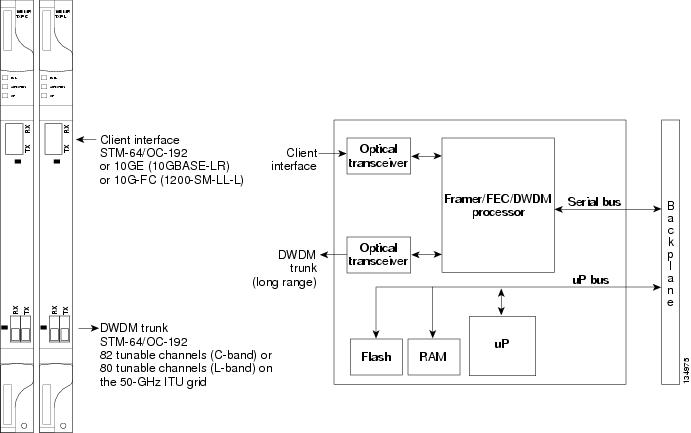
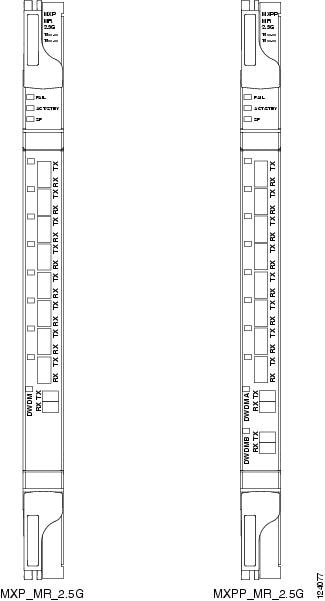
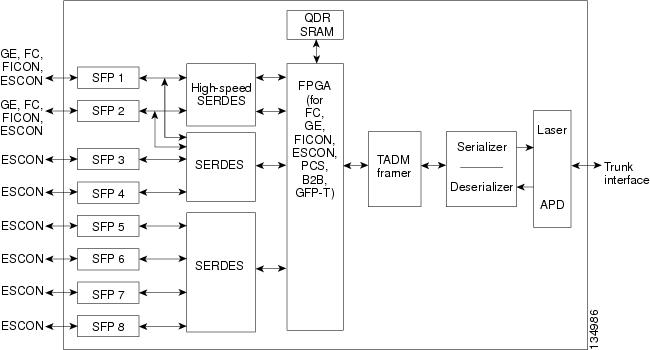


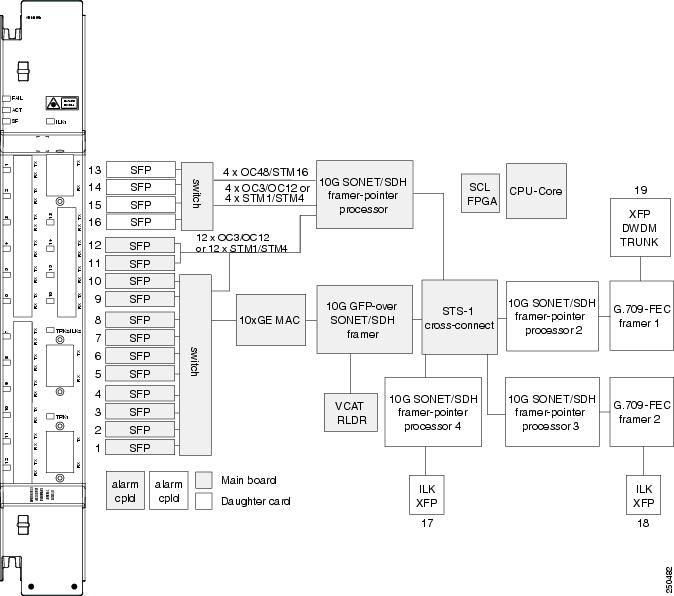
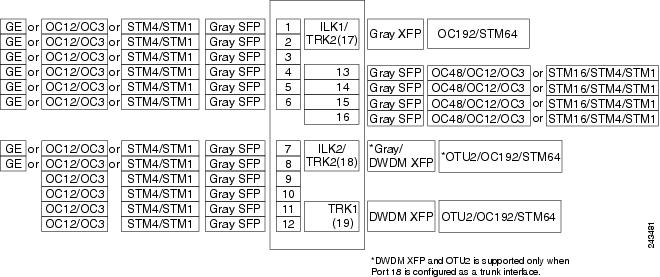
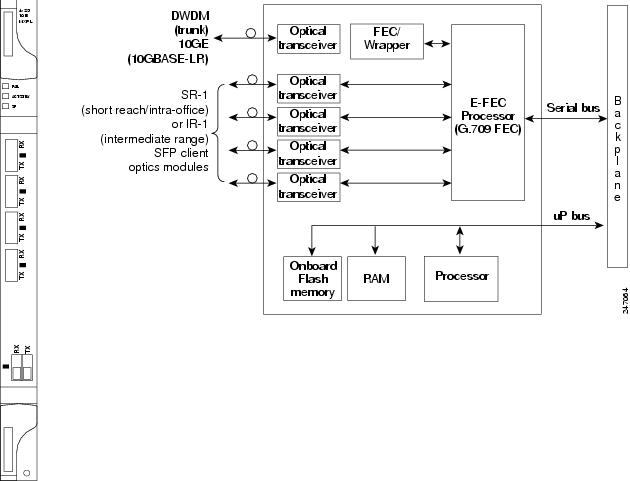
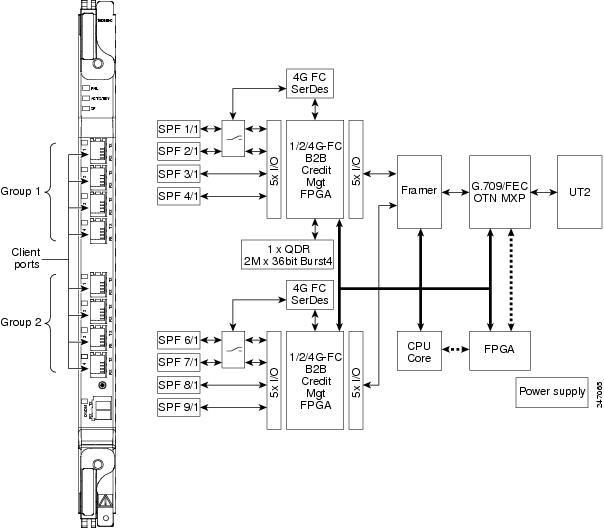
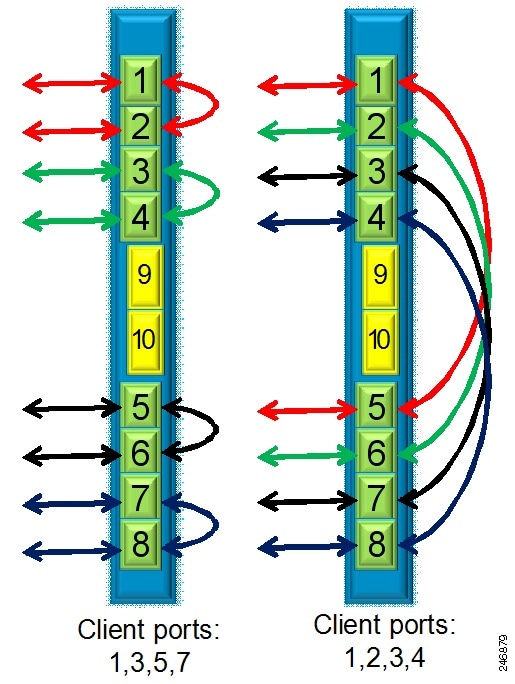
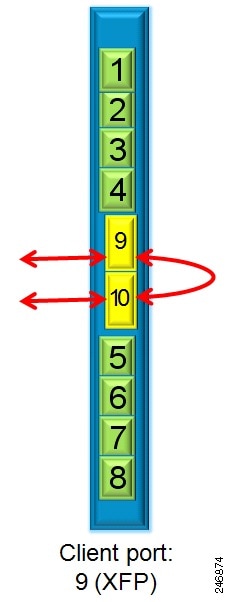
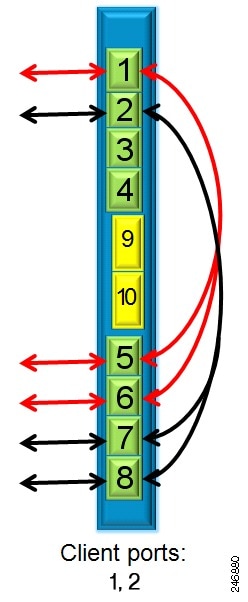
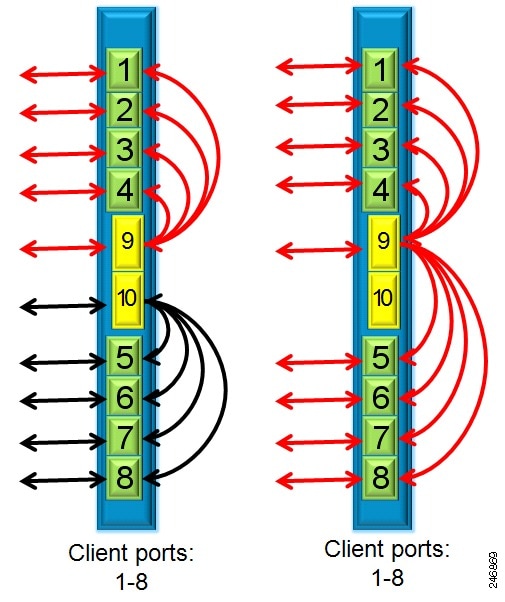
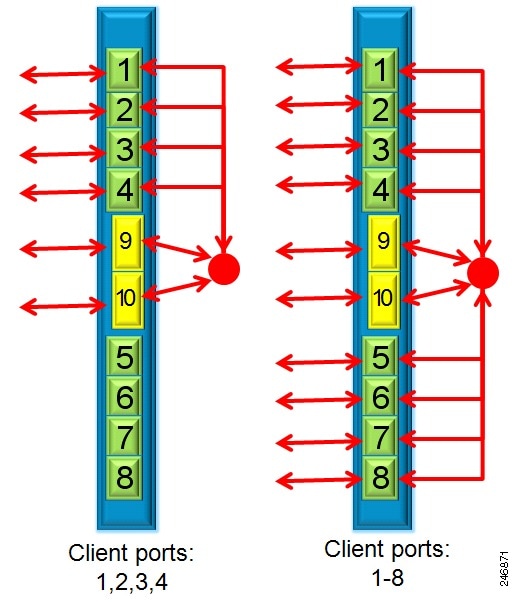
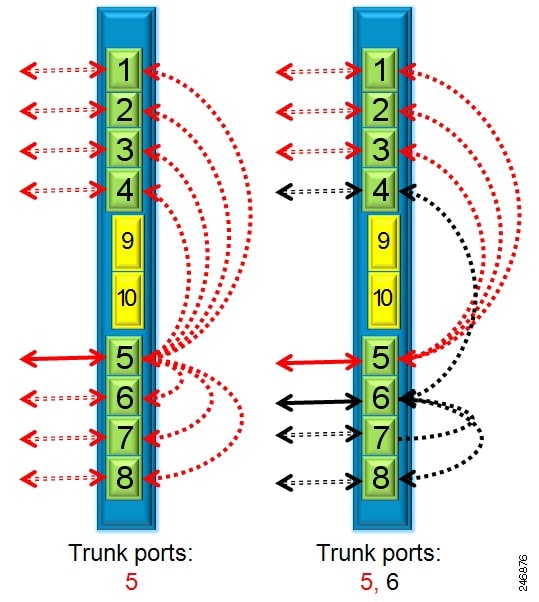
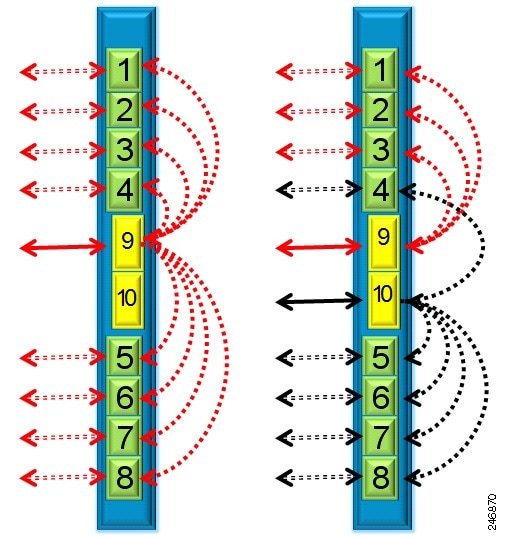
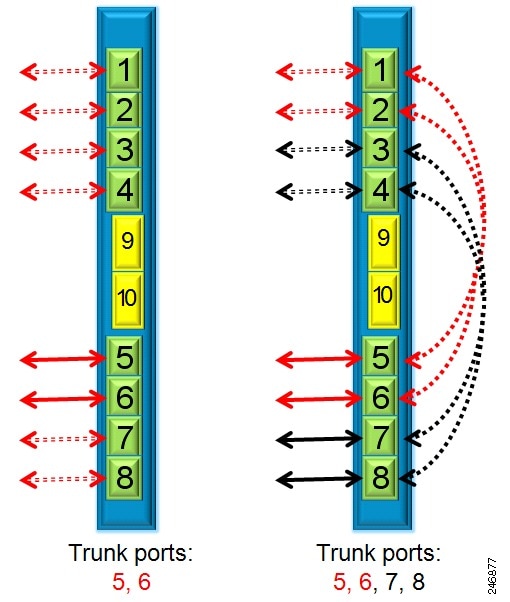
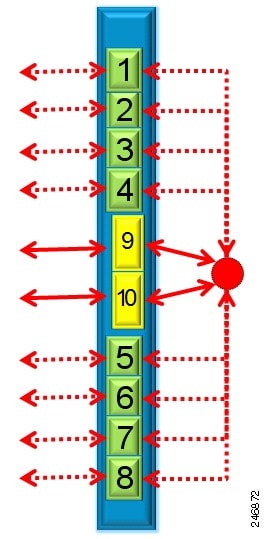
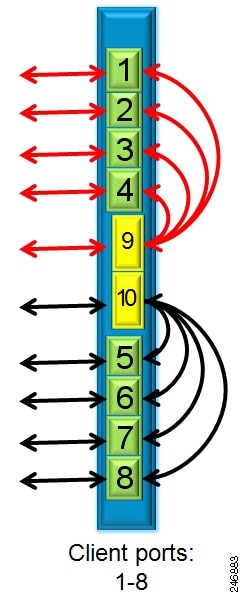
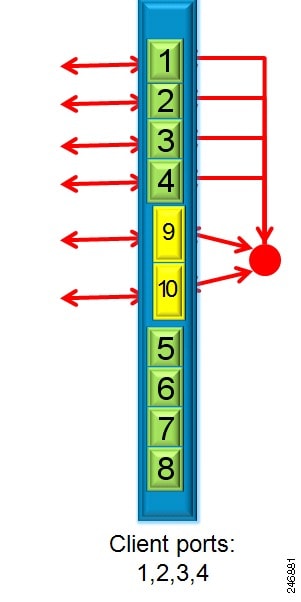
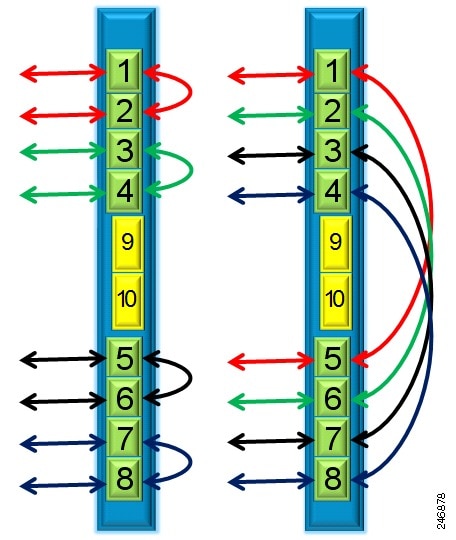
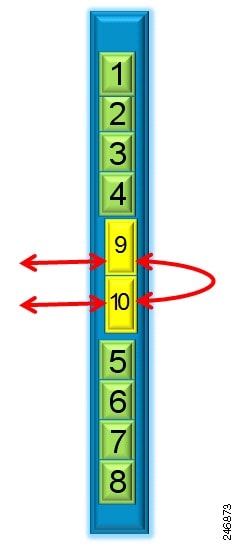
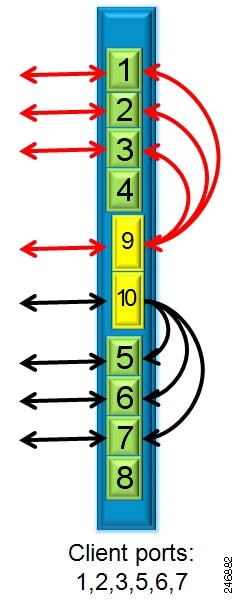
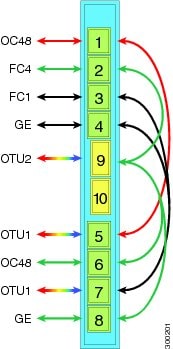
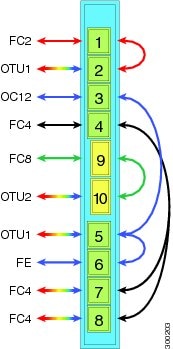
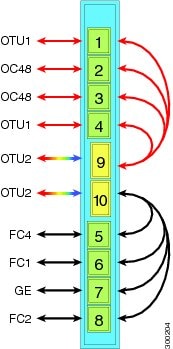
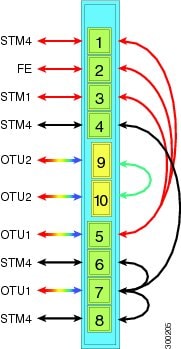
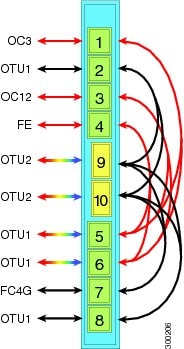
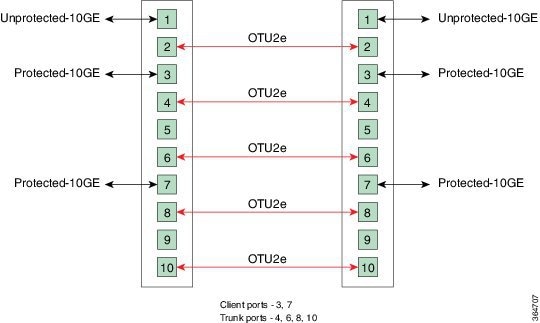

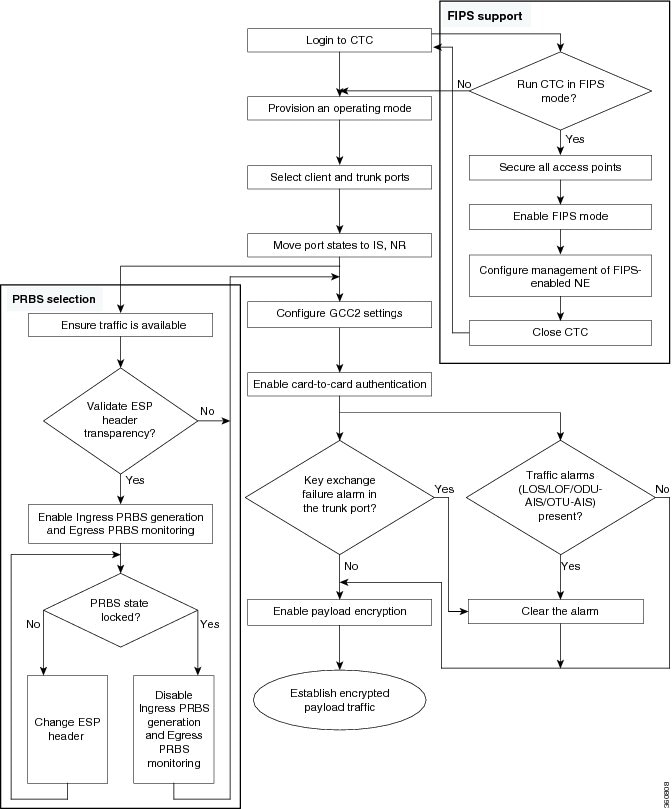


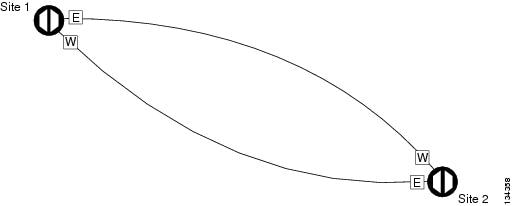
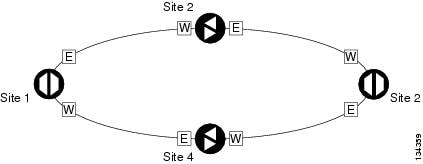
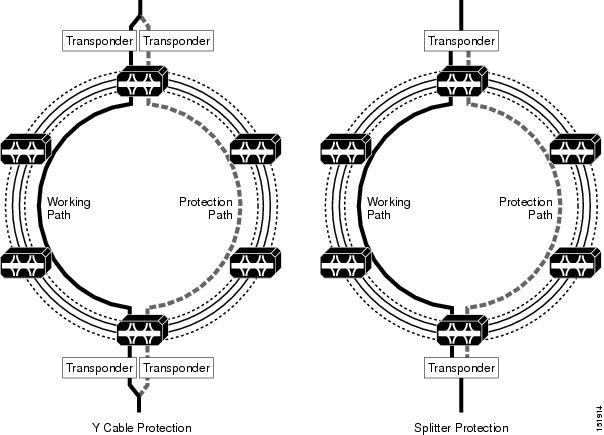



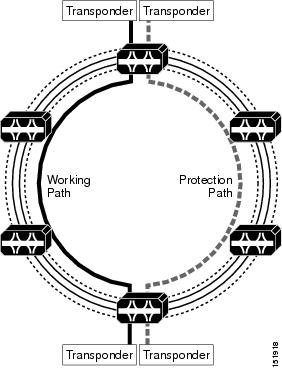
 Feedback
Feedback